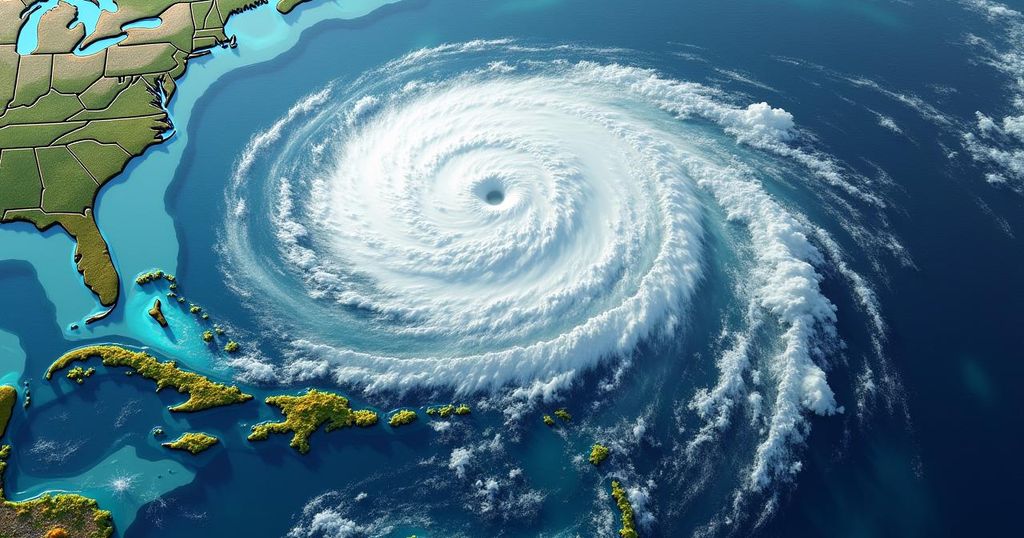Understanding Tropical Cyclones: Formation, Patterns, and Forecasting
Tropical cyclones emerge in warm ocean waters within 20° latitudes, peaking after maximum solar radiation. Approximately 80 storms arise annually, with the Pacific Ocean generating the most. Their formation relies on specific atmospheric conditions and oceanic warmth, predominantly occurring from July to September in the Northern Hemisphere. Cyclones typically move westward and then poleward, influenced by trade winds and the Coriolis effect.
Tropical cyclones are significant meteorological phenomena that arise in the warmer regions of the oceans, typified by high winds and intense rains. Each year, approximately 80 tropical storms are formed, with about two-thirds classified as severe, designated as category 1 or higher on the Saffir-Simpson scale. These storms predominantly form between 20° north and 20° south latitudes, where sea surface temperatures are sufficiently warm to support cyclone development. Areas with cooler currents, such as the Peru Current in the eastern South Pacific and the Benguela Current in the South Atlantic, do not favor cyclone formation due to inadequate warmth. The Pacific Ocean is responsible for generating the highest number of tropical storms, with the western Pacific being home to the most powerful storms, known as super typhoons. The Indian Ocean follows as the second largest contributor to cyclone activity, while the Atlantic Ocean ranks third. Another defining characteristic of tropical cyclones is their seasonal occurrence. These storms typically achieve peak intensity after the maximum solar radiation of the year, occurring in the late summer to early fall for the Northern Hemisphere (July to September) and early winter for the Southern Hemisphere (January to March). The development of tropical cyclones is closely related to atmospheric conditions and oceanic factors. The warm ocean waters at lower latitudes create ideal atmospheric conditions, where large-scale circulation systems and easterly waves can prompt the formation of storms. In the Atlantic and eastern North Pacific, most cyclones form from these easterly waves. In addition, geographic features such as mountains can induce cyclones by altering the waves that traverse regions like the Caribbean into the eastern Pacific. Tropical cyclones generally move westward and, over time, drift poleward. This motion is driven by Earth’s atmospheric circulation—the trade winds blowing from east to west. The presence of subtropical highs and the Coriolis effect also contribute to their poleward and eventual eastward movement when they enter mid-latitude westerlies. Notably, tropical cyclones in the Northern Hemisphere can reach higher latitudes, benefiting from warm ocean currents, such as the Gulf Stream, which supports their persistence as they approach land.
Tropical cyclones are a global weather phenomenon primarily occurring over warm ocean waters, characterized by high winds and severe rainfall. Their formation is dependent on certain meteorological conditions, including warm sea surface temperatures and atmospheric circulation patterns. Understanding the geographical, oceanographic, and atmospheric factors that contribute to cyclone formation helps predict their development, strength, and path, which is essential for preparedness and response strategies in affected regions. The intensity and frequency of cyclones can significantly impact coastal communities, making the study of their patterns crucial for disaster management and mitigation.
In summary, tropical cyclones are primarily generated in warm oceanic regions within specific latitudes, with their development influenced by wind patterns and atmospheric conditions. The majority of cyclones arise during the warm seasons when ocean temperatures peak. The cyclical nature of these storms, coupled with atmospheric dynamics and ocean currents, dictates their paths, impacting regions significantly, particularly where warm waters prevail. Understanding these factors aids in effectively forecasting and mitigating the effects of such powerful storms.
Original Source: www.britannica.com




Post Comment